Drawing and correcting these PCB took little over two months :
If someone wants PDF negative and positive , let me know pls
If someone wants PDF negative and positive , let me know pls
Attachments
-
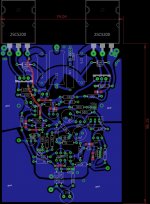 first onesecond.jpg430.7 KB · Views: 455
first onesecond.jpg430.7 KB · Views: 455 -
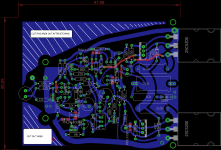 first one comps.png259.5 KB · Views: 450
first one comps.png259.5 KB · Views: 450 -
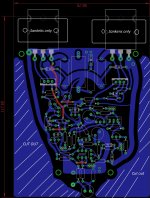 withsankens.jpg488.7 KB · Views: 438
withsankens.jpg488.7 KB · Views: 438 -
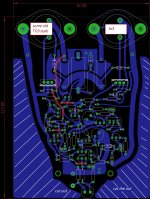 to3 140 naps.jpg510.3 KB · Views: 426
to3 140 naps.jpg510.3 KB · Views: 426 -
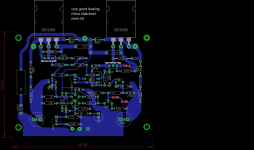 H140 comps.png184.3 KB · Views: 421
H140 comps.png184.3 KB · Views: 421 -
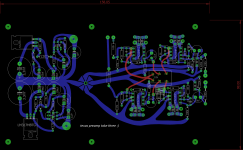 nice.png322.6 KB · Views: 120
nice.png322.6 KB · Views: 120 -
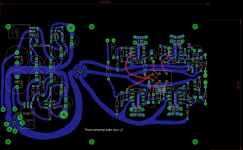 coolcopy.png341.2 KB · Views: 111
coolcopy.png341.2 KB · Views: 111 -
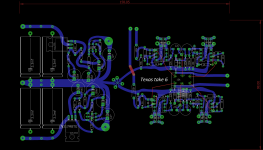 components small cap.png310.7 KB · Views: 119
components small cap.png310.7 KB · Views: 119 -
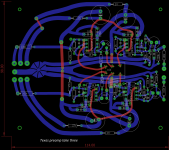 verynice.png249.4 KB · Views: 155
verynice.png249.4 KB · Views: 155 -
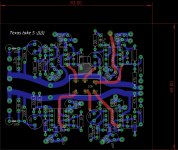 cute.png191.2 KB · Views: 162
cute.png191.2 KB · Views: 162
I will start building naim stuff soon, preamps and so on.. not sure if am still able to tell difference in sound cuz taking out tonsils was bad idea for me atleast..
I still can here 16Khz..... but there is the impedance that has been changed drastically...
I also want to pump up my car with 40 cylindrical LI-fePO4 cells, stuff some naims there in bridged mode directly to battery CELLS and have fun if possible.
I still can here 16Khz..... but there is the impedance that has been changed drastically...
I also want to pump up my car with 40 cylindrical LI-fePO4 cells, stuff some naims there in bridged mode directly to battery CELLS and have fun if possible.
Member
Joined 2009
Paid Member
Nice board, Bigun!
(Although it appears to have contracted a tantalum infection....)
darn, how did those little buggers get in there !
Fuse blowing while powering on NAP-200 clone
Hi! My fuse (3.15AT) sometimes blows when I power my NAP-200 clone on. I can’t really say how often. The last one lasted quite long, but now the new one already blew after two or three times powering the unit on.
I think we had the problem here already, but I couldn’t really find a solution. I am using a Tiger toroid transformer. The specs from my order were 450VA, Primary: 0-230V @ 50Hz Electrostatic screen, Secondaries: 2 x 28-0-28V @ 3.57A rms + 26-0-26V @ 0.96A rms.
Should I just use 4AT?
Hi! My fuse (3.15AT) sometimes blows when I power my NAP-200 clone on. I can’t really say how often. The last one lasted quite long, but now the new one already blew after two or three times powering the unit on.
I think we had the problem here already, but I couldn’t really find a solution. I am using a Tiger toroid transformer. The specs from my order were 450VA, Primary: 0-230V @ 50Hz Electrostatic screen, Secondaries: 2 x 28-0-28V @ 3.57A rms + 26-0-26V @ 0.96A rms.
Should I just use 4AT?
Member
Joined 2009
Paid Member
Transformers can be wound with fewer or greater turns according to application. This also alters the resistance and peak inrush current as does the amount of capacitance, wire sizes, PCB traces and so on. So there are several ways we can cause problems for ourselves in specifying transformers, components etc. but I completely agree with Bigun's suggestion, as it enables more effective fuse protection, even if it isn't precise.
Sounds like typical inrush for the toroid. You can use a bigger fuse but I prefer a soft start module, which you can buy off ePay at very reasonable prices.
Transformers can be wound with fewer or greater turns according to application. This also alters the resistance and peak inrush current as does the amount of capacitance, wire sizes, PCB traces and so on. So there are several ways we can cause problems for ourselves in specifying transformers, components etc. but I completely agree with Bigun's suggestion, as it enables more effective fuse protection, even if it isn't precise.
Great, thanks very much! I’ll get a soft start module then. There are lots on eBay and in online HiFi stores.
Does this one look good?
Softstart Module 230V 15A for Amplifiers - Audiophonics
Softstart Module 230V 15A for Amplifiers - Audiophonics
Jim you also can use this:
I have bought only pcb from Marcus ebay shop and assembled for Pass Amp use.
einschaltstrom
I have bought only pcb from Marcus ebay shop and assembled for Pass Amp use.
einschaltstrom
Jim you also can use this:
I have bought only pcb from Marcus ebay shop and assembled for Pass Amp use.
einschaltstrom
Fantastic, thanks!
I would just put a bigger fuse in it.Hi! My fuse (3.15AT) sometimes blows when I power my NAP-200 clone on. I can’t really say how often. The last one lasted quite long, but now the new one already blew after two or three times powering the unit on.
I think we had the problem here already, but I couldn’t really find a solution. I am using a Tiger toroid transformer. The specs from my order were 450VA, Primary: 0-230V @ 50Hz Electrostatic screen, Secondaries: 2 x 28-0-28V @ 3.57A rms + 26-0-26V @ 0.96A rms.
Should I just use 4AT?
Hello everybody first post for me and just wondering if this thread is still active. Over the last couple of weeks I have read this thread from start to where it is now. My reason for this post, well I finished making a version of the Nap 140 and have been carrying out comparisons between my Naim Nac 42 and Naim Nap 140 with my 140 clone. I am not sure the thread is still active so I will leave it there for the moment. Bill
Naim Nap 140 Clone Review
Can I just say I have never written a review where I compare different items of hi fi equipment but the following is my attempt to compare my Naim Nap 140 with a clone version of the same amplifier.
Equipment I used to do the comparison includes a:
Naim Nap 140 power amplifier.
Naim Nac 42 preamplifier with every available Avondale modification available.
2 different clone versions of a Naim 42.5 preamplifier
A clone version of the Naim 152XS preamplifier
A Nobsound NS-01P it is a clone of some Marantz preamplifier.
Speakers used were:
Linn Tukan
Mission 780se
Source was Marantz CD6006UK Edition
The clone kit is I believe to be one of the latest LJM 140 Naim clone kits. I must stress that the kit I used has not been modified in any way how the kit arrived is how it was put together. I am not a very experienced builder but over the last three months I have put together the two 42.5 preamplifiers and the Naim 140 clone. The 152XS and the Nobsound were already constructed.
The first preamplifier I connected to the 140 clone was the 152XS clone and while it sounded okay it was not very involving and seemed to lack rhythm. There was a reasonable amount of bass and the treble was acceptable. All in all, the sound lacked weight and reminded me of a Pioneer A400X which a friend owns. Changing from the Tukans to the Missions improved the bass a little. There was very little in the way of a sound stage though it was possible to pick out a variety of instruments. The music felt a little disjointed.
The second preamplifiers I used were the two 42.5 preamplifier kits, the difference was immediate the music was more involving with a much heavier bass sound with a sharper treble. With the missions connected the bass could become boomy with very little control even the Tukans could become boomy. I need to say when I say sharp treble, I don’t mean it was painful maybe I should say the treble became more focussed.
The last preamplifier I used with the Naim 140 clone was the Nobsound which is a valve preamplifier. I have to say the clone worked extremely well, the music flowed the bass guitar sounded like a bass guitar both sets of speakers responded well to this partnership and to be honest I could live with the sound produced. At first this pairing seemed to lack bass but I soon realised this was not the case. For the first time bass drums had a real snap and kick about them and the treble was smooth and airy. This pairing was the first time I had a really good soundstage even if it was a little muddled on more complex passages of music.
Finally, I connected the Naim 140 Clone to the Naim Nac 42 preamplifier with full Avondale modifications and a snaps power supply. I almost fell over when I played The Chain by Fleetwood Mac there was a deep soundstage and it was easy to pick out particular instruments there was an overall weight to the sound not present when using the other preamplifiers.
Everything I played was coped with and the bass whether it was guitar or drums sounded crisp and forceful. There was no doubt about the clone amplifiers ability to make music with the proper Naim Nac 42 on some music it was amazingly close to the proper Naim Nap 140.
Where I could tell a difference was at low volume where the clone amplifier was unable to match the proper Naims rhythm and bounce the proper Naim did not need to be played at anything above a low level to sound good. The clone still sounded good but it was easy to tell which was which when doing blind tests. At higher volume it was harder but I always picked the correct amplifier. For those who say it is a fifty-fifty chance of picking the right one I had a Naim Nap 90 also connected and I picked out the amplifiers with 100% accuracy as did my friend Mark who is by no means an audio enthusiast.
In summary I would say that the preamplifier was the controlling factor when comparing the items, I compared even though the clone sounds okay with other preamplifiers it was not until I connected it to the Naim Nac 42 that the clone took off. Remember this clone has not been modified in any way and yet it was amazingly close to the real Naim Nap 140 power amplifier.
Music used included: Fleetwood Mac, Joan Armatrading, Tina Turner, Friend and Fellow, Grover Washington, Karolina Protsenko, Kate Melua, Paul Simon, Milk Inc, Amira, Julie Tabor, Theme Music From, Jaws, Close Encounters, A selection of classical music. Martin Lizidis, Eric Clapton, Dire Straits and many more.
As I said this is the first time I have written a review of this kind and if I am honest I am only scratching the surface of what I actually did during my comparisons.
Can I just say I have never written a review where I compare different items of hi fi equipment but the following is my attempt to compare my Naim Nap 140 with a clone version of the same amplifier.
Equipment I used to do the comparison includes a:
Naim Nap 140 power amplifier.
Naim Nac 42 preamplifier with every available Avondale modification available.
2 different clone versions of a Naim 42.5 preamplifier
A clone version of the Naim 152XS preamplifier
A Nobsound NS-01P it is a clone of some Marantz preamplifier.
Speakers used were:
Linn Tukan
Mission 780se
Source was Marantz CD6006UK Edition
The clone kit is I believe to be one of the latest LJM 140 Naim clone kits. I must stress that the kit I used has not been modified in any way how the kit arrived is how it was put together. I am not a very experienced builder but over the last three months I have put together the two 42.5 preamplifiers and the Naim 140 clone. The 152XS and the Nobsound were already constructed.
The first preamplifier I connected to the 140 clone was the 152XS clone and while it sounded okay it was not very involving and seemed to lack rhythm. There was a reasonable amount of bass and the treble was acceptable. All in all, the sound lacked weight and reminded me of a Pioneer A400X which a friend owns. Changing from the Tukans to the Missions improved the bass a little. There was very little in the way of a sound stage though it was possible to pick out a variety of instruments. The music felt a little disjointed.
The second preamplifiers I used were the two 42.5 preamplifier kits, the difference was immediate the music was more involving with a much heavier bass sound with a sharper treble. With the missions connected the bass could become boomy with very little control even the Tukans could become boomy. I need to say when I say sharp treble, I don’t mean it was painful maybe I should say the treble became more focussed.
The last preamplifier I used with the Naim 140 clone was the Nobsound which is a valve preamplifier. I have to say the clone worked extremely well, the music flowed the bass guitar sounded like a bass guitar both sets of speakers responded well to this partnership and to be honest I could live with the sound produced. At first this pairing seemed to lack bass but I soon realised this was not the case. For the first time bass drums had a real snap and kick about them and the treble was smooth and airy. This pairing was the first time I had a really good soundstage even if it was a little muddled on more complex passages of music.
Finally, I connected the Naim 140 Clone to the Naim Nac 42 preamplifier with full Avondale modifications and a snaps power supply. I almost fell over when I played The Chain by Fleetwood Mac there was a deep soundstage and it was easy to pick out particular instruments there was an overall weight to the sound not present when using the other preamplifiers.
Everything I played was coped with and the bass whether it was guitar or drums sounded crisp and forceful. There was no doubt about the clone amplifiers ability to make music with the proper Naim Nac 42 on some music it was amazingly close to the proper Naim Nap 140.
Where I could tell a difference was at low volume where the clone amplifier was unable to match the proper Naims rhythm and bounce the proper Naim did not need to be played at anything above a low level to sound good. The clone still sounded good but it was easy to tell which was which when doing blind tests. At higher volume it was harder but I always picked the correct amplifier. For those who say it is a fifty-fifty chance of picking the right one I had a Naim Nap 90 also connected and I picked out the amplifiers with 100% accuracy as did my friend Mark who is by no means an audio enthusiast.
In summary I would say that the preamplifier was the controlling factor when comparing the items, I compared even though the clone sounds okay with other preamplifiers it was not until I connected it to the Naim Nac 42 that the clone took off. Remember this clone has not been modified in any way and yet it was amazingly close to the real Naim Nap 140 power amplifier.
Music used included: Fleetwood Mac, Joan Armatrading, Tina Turner, Friend and Fellow, Grover Washington, Karolina Protsenko, Kate Melua, Paul Simon, Milk Inc, Amira, Julie Tabor, Theme Music From, Jaws, Close Encounters, A selection of classical music. Martin Lizidis, Eric Clapton, Dire Straits and many more.
As I said this is the first time I have written a review of this kind and if I am honest I am only scratching the surface of what I actually did during my comparisons.
Hi, interesting comments there. We need to recognize though, that clone builds are quite variable and if we don't practice the degree of parts selection and matching, wiring, grounding and interconnection practice Naim did, results from one user/assembler to another may be quite different. Good though, that you are impressed with your clones 
I'm surprised that you found LJM's version to be so similar to NAP140. These clones have been around for some years now and I've assembled and listened to several pairs for friends and myself. Whilst the PCB and components have changed over time, I routinely replace some of the substitute semis supplied in the kits and prebuilt modules, in order to get closer to original sound quality with original spec. components and matching. I try to always use the same test preamp though, to ensure apples are compared with apples. Most Naim gear that I can afford has already been tinkered with so it's been essential to find a standard preamp so that comparisons are meaningful. For that, I've had to borrow an old but maintained original NAC32.
Probably for cost reasons, there is an important difference in the transistor types supplied for TR4 and TR6 in most clone kits. The original types fitted are notable for a large amount of capacitance that most substitute types have a lot less of. You might notice that Avondale always include the same unusual ZTX653/753 transitor pair in their clones too. Using such inappropriate transistor types may not be good for achieving low distortion but it has an over-riding desirable influence on the sound quality. IMV, it's the dominant source of Naim's P,R & T effect which, done properly, is what really distinguishes Naim's earlier NAP/NAIT models from virtually everything else. They are still there in SMD format, even in current Naim models so whether you accept my views or not, there is a significant feature there which was intended by the designer and still warrants consideration.
I'm surprised that you found LJM's version to be so similar to NAP140. These clones have been around for some years now and I've assembled and listened to several pairs for friends and myself. Whilst the PCB and components have changed over time, I routinely replace some of the substitute semis supplied in the kits and prebuilt modules, in order to get closer to original sound quality with original spec. components and matching. I try to always use the same test preamp though, to ensure apples are compared with apples. Most Naim gear that I can afford has already been tinkered with so it's been essential to find a standard preamp so that comparisons are meaningful. For that, I've had to borrow an old but maintained original NAC32.
Probably for cost reasons, there is an important difference in the transistor types supplied for TR4 and TR6 in most clone kits. The original types fitted are notable for a large amount of capacitance that most substitute types have a lot less of. You might notice that Avondale always include the same unusual ZTX653/753 transitor pair in their clones too. Using such inappropriate transistor types may not be good for achieving low distortion but it has an over-riding desirable influence on the sound quality. IMV, it's the dominant source of Naim's P,R & T effect which, done properly, is what really distinguishes Naim's earlier NAP/NAIT models from virtually everything else. They are still there in SMD format, even in current Naim models so whether you accept my views or not, there is a significant feature there which was intended by the designer and still warrants consideration.
Last edited:
Thanks for the review, Billyfish! It's not often people to give feedback after they build the amp with help from this thread.
I agree with Ian that it would be better if you compared both amps more extensively with one preamp only. However, I also agree that preamps make more difference in a system than the power amp - my observation too...
From what I read, it seems that the differences between your clone and the real deal are substantial, if so easy to hear. My impressions from your review are that the clone sounds dull at low level... And I have experienced that too with not optimized components, wiring, and power supply. As said many times, the original clones, as sold, are OK and easy, cheap to make amps. Not a Naim. With the luxury to have an original 140 side by side, you have to try to bring the clone closer to it. And then tell us what you did
It shouldn't be so easy to hear differences between two power amps. Some difference in character maybe, but nothing like 100% certainty with any music that one is cleaner, more musical and generally better than the other.
I agree with Ian that it would be better if you compared both amps more extensively with one preamp only. However, I also agree that preamps make more difference in a system than the power amp - my observation too...
From what I read, it seems that the differences between your clone and the real deal are substantial, if so easy to hear. My impressions from your review are that the clone sounds dull at low level... And I have experienced that too with not optimized components, wiring, and power supply. As said many times, the original clones, as sold, are OK and easy, cheap to make amps. Not a Naim. With the luxury to have an original 140 side by side, you have to try to bring the clone closer to it. And then tell us what you did
It shouldn't be so easy to hear differences between two power amps. Some difference in character maybe, but nothing like 100% certainty with any music that one is cleaner, more musical and generally better than the other.
Last edited:
Drawing and correcting these PCB took little over two months :
If someone wants PDF negative and positive , let me know pls
Please post the pdf here helping other build this.
- Home
- Amplifiers
- Solid State
- NAP-140 Clone Amp Kit on eBay